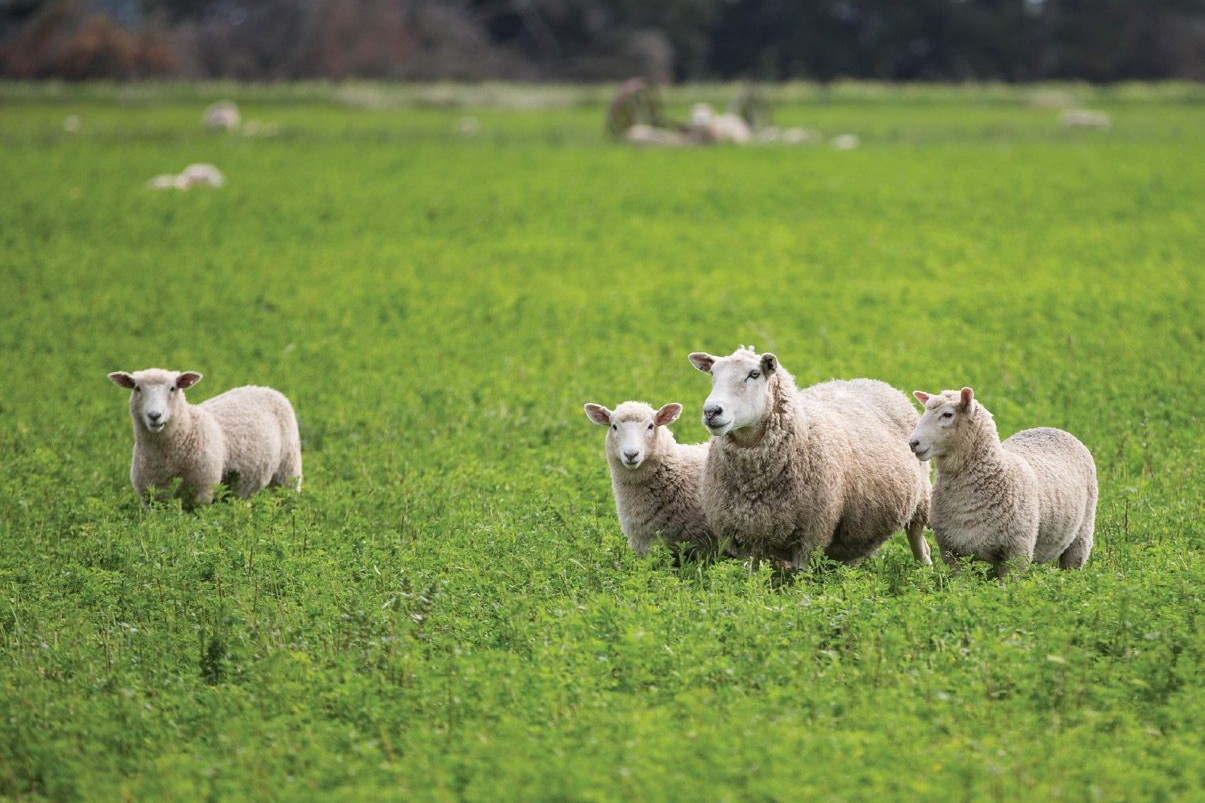Growing lambs as fast as you can is key to gaining high profitability, Ken Geenty writes.
Growing top lambs for the best profits has no easy recipe. The key is flexibility during different seasons and being in tune with what the market wants, or your needs for replacement breeders. It’s probable your goal will be to grow your lambs as fast as you can.
This means converting the feed in front of you to liveweight gain as efficiently as possible. Ideally on the back of good genetic growth potential of your sheep and by starting with healthy and viable lambs from good ewe pregnancy feeding. The icing on the cake comes from astute management for the all-important milk and pasture, or crop grazing of lambs pre- and post-weaning.
The flexible, and sometimes considered extreme, management and feeding options suggested here are based on earlier research by this author, still as relevant today as originally. The recommendations are well proven on farms.

Lambing to weaning
There’s lots of options for managing lambs to weaning, including at different ages as in Figure 1. Variables such as the season and feed supply will determine the best times to wean. For example, as shown in Figure 2, if seasonal feed is short due to dry conditions, it will be better to wean lambs earlier to save feed and tighten the ewes up. Remember the moment you wean lambs and ewes stop lactating, their feed requirement pretty much halves to less than one kg of drymatter (DM) a day. Furthermore, when lambs are weaned they can be given the best-quality feed on offer as they are not competing with their mums.
A key thing determining lamb weaning management is lambing date in relation to your average seasonal pasture growth.
Ideally, peak lambing should coincide with spring pasture kicking away. Research and general observations across NZ sheep farms show lambing dates are often too early, meaning lambs get away to a slow start. The recommendation is to err on being slightly later rather than slightly earlier. Naturally, in drought-prone areas management strategies need to be in place to cope with the possibility of looming feed shortages.
The extreme of weaning when lambs are four to five weeks old causes a marked but temporary growth check for one to two weeks. Despite this, it’s key to note, as the lamb weaning ages graph shows, the subsequent growth trajectory of lambs is similar whether on milk from their mothers or good-quality pasture alone. This is because the nutritional value of high-quality spring pasture is similar to that of ewe’s milk.

Economically, pasture is vastly more efficient than milk, valued on variable costs, at less than 20 cents per kg DM compared to about $12/kg milk solids, based on sheep dairy prices. In addition, for ewes the feed cost of producing milk is very expensive. Total pasture required by ewes and lambs between five and 10 weeks of age is 40% greater compared with only lambs when weaned at five weeks. So it’s much more efficient to channel feed directly through lambs from as early an age as possible.
A key requirement for very early weaning of lambs at four to five weeks old under conditions of extreme feed shortage is a minimum lamb liveweight of 12kg. Use of creep grazing can assist greatly with early weaning, simply by raising a gateway high enough for the lambs to creep ahead of the ewes onto fresh pastures.
Lambs need high-quality pasture with good nitrogen levels for early rumen development. Leafy lucerne does this job well, though good clover-dominant pasture can be equally effective.
If quality pasture is plentiful lambs can stay on their mothers until 12 weeks old so long as they’re growing at about 200g/day to reach at least 24kg LW at the later weaning age.
In the experiments shown in the graphs, ryegrass clover-dominant pastures were used pre-weaning with lucerne post-weaning. Lamb growth and development studies by this author carried out at the same time clearly showed on such high-quality pasture or lucerne, lamb rumen development was usually surprisingly advanced from three weeks of age, meaning very early weaning was not a major set-back to lambs.
If pasture isn’t in good supply, supplements such as lucerne chaff, offered in feed troughs, are ideal to promote lamb rumen function in preparation for early weaning. Another useful tool is the already- mentioned creep-grazing of lambs to help kick-start rumen function.
Post-weaning
The key for lambs after weaning is a good supply of quality pasture, or specialist crops such as brassicas, lucerne or herbs, all with a protein content above 15%. To achieve growth rates of 200g+/day lambs will need to consume 13+ megajoules of metabolisable energy a day or 1kg DM/day requiring liberal amounts of the high-quality feed on offer.
In the lamb weaning-age experiments referred to above, young leafy lucerne did the job well.
A key factor for lambs post-weaning is good animal health management, including effective parasite control and supply of mineral supplements where there are known deficiencies such as selenium, cobalt or copper. Lambs will also need to have had earlier immunisation against clostridial diseases.
- Ken Geenty is a primary industries consultant.





